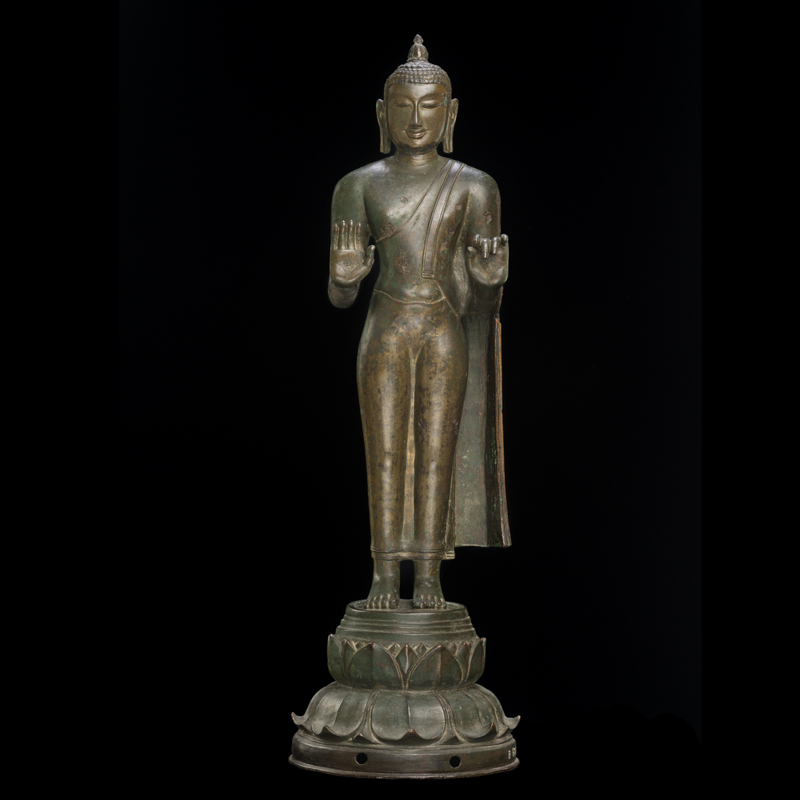Buddha
Description
This sculpture from a stupa at Nagapattinam provides important artistic evidence of Chinese and Southeast Asian connections with India. An inscription records that a Chinese king constructed a stupa for Chinese traders, who arrived here during the reign of the Pallava king, Narsimavarman II (690–720 CE). Marco Polo observed this inscription in the 13th century. Though the characteristics of the Buddha standing on a double-inverted lotus are familiar, the rendering reveals foreign influences. The most remarkable feature is the flame-like ushnisha above the hair. Variations in the depiction of both hands, raised in the abhaya and the chintana mudra near the waist, are a distinct Southeast Asian feature. The image was probably gilded. The artist could have been Indian or Javanese.
Gift from the Collection of Smt. Amaravati Gupta.
Collection
Buddhist Art
Object Type
Sculpture
Material
Bronze
Schools/Culture/Period
Ancient
Technique
--
Date
10th century CE
Location
Nagapattinam, Tanjavur District, Tamil Nadu
Dimension
60.8 x 19 cms
